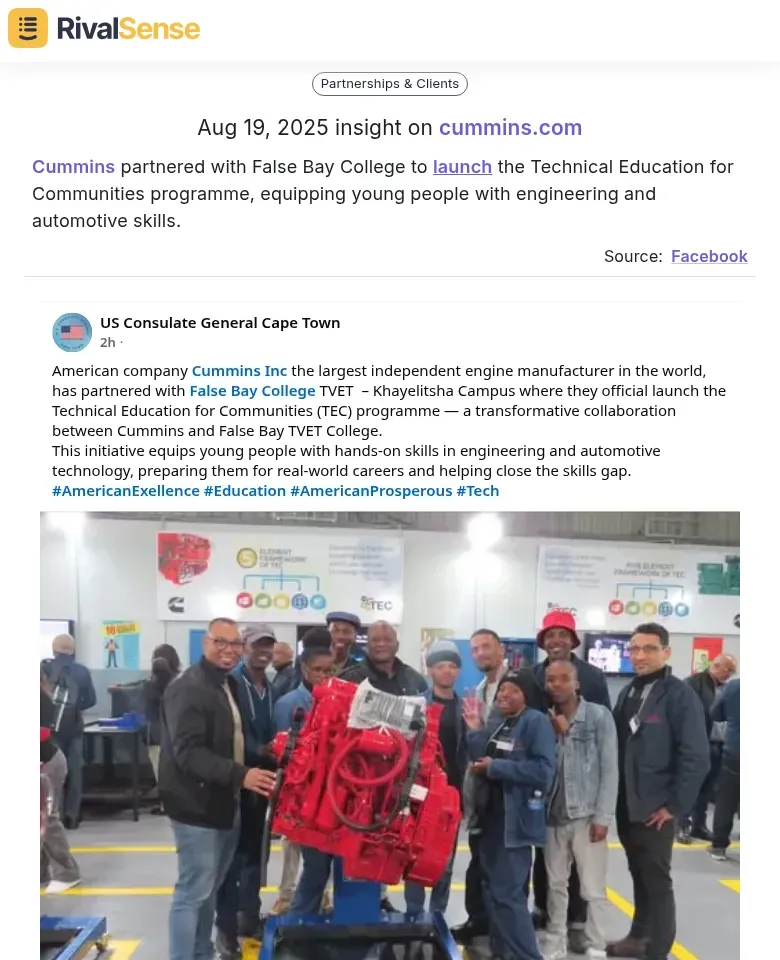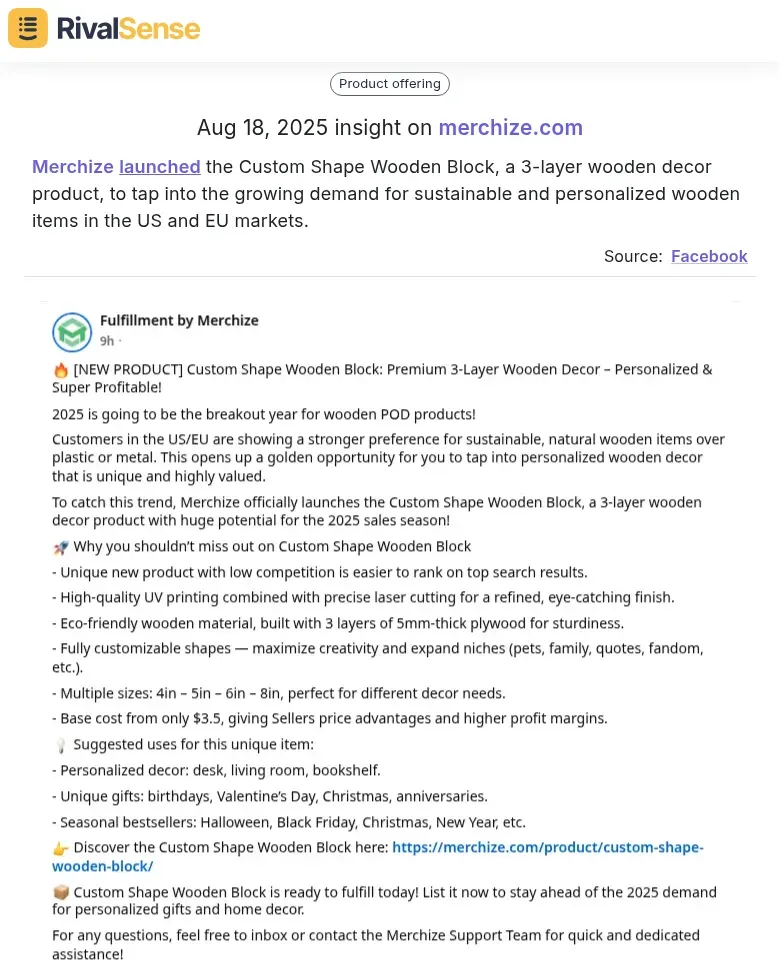Predictive Facebook Competitor Insights for Partnership ROI: From Reactive to Proactive Strategy
In today's hyper-competitive B2B landscape, reactive competitor monitoring is no longer sufficient. Predictive analytics transforms this traditional approach into a proactive strategic advantage, enabling businesses to anticipate competitor moves before they happen. The critical link between competitor intelligence and partnership ROI becomes evident when you can forecast market shifts, identify emerging opportunities, and optimize partnership strategies based on data-driven insights.
Real-world examples demonstrate this shift from firefighting to strategic foresight. Companies using predictive competitor insights have achieved 30-50% higher partnership ROI by identifying optimal timing for joint ventures or anticipating competitor pricing changes before they impact market dynamics.
From Reactive to Proactive: Learning from Cybersecurity Defense Strategies
Just as cybersecurity has evolved from reactive firefighting to predictive threat intelligence, competitive analysis must shift from hindsight to foresight. Predictive competitor analysis enables proactive defense by identifying early warning signals before market shifts occur. Monitor competitor job postings, patent filings, and leadership changes—these often precede strategic pivots.

Siemens Energy moved from reactive firefighting to proactive defence in cybersecurity. Tracking such strategic shifts in competitor positioning can reveal valuable insights about market direction and emerging threats before they impact your business.
Build predictive models using historical competitor data to forecast moves. Track pricing changes, product launches, and marketing spend patterns to anticipate their next play. Implement a 3-step framework:
✅ Continuous monitoring of 10+ data sources
✅ Pattern recognition through AI algorithms
✅ Scenario planning for likely competitor actions
Practical tip: Create a "competitor early warning dashboard" tracking key metrics like hiring trends, website traffic changes, and social media sentiment. This transforms reactive intelligence into strategic foresight, allowing you to prepare counter-moves before competitors even execute their plans.
Strategic Partnership Intelligence: Lessons from Educational Collaborations
Strategic partnership intelligence begins with analyzing competitor educational collaborations to identify high-ROI opportunities. Track competitors' educational partnerships to uncover untapped market segments and talent pools they're targeting.

Cummins partnered with False Bay College to launch the Technical Education for Communities programme. Monitoring such partnership announcements helps identify emerging market trends and potential collaboration opportunities before competitors fully capitalize on them.
For predictive modeling, focus on three key metrics: partnership engagement rates (aim for 15%+ higher than competitors), market penetration speed (target 30% faster than industry average), and student conversion rates (benchmark against top performers).
Practical steps:
- Map competitor partnership ecosystems using social listening tools
- Calculate ROI potential by comparing competitor partnership costs vs. results
- Identify gaps where competitors underperform in specific demographics or regions
Key insight: Educational partnerships showing 40%+ engagement lift typically deliver 3x ROI within 12 months. Focus on partnerships that align with underserved markets your competitors overlook.
Market Opportunity Forecasting: Sustainable Product Innovation Insights
Market opportunity forecasting transforms competitor intelligence into sustainable innovation gold. By analyzing competitor product launches through predictive analytics, you can anticipate emerging trends 6-12 months before market saturation.

Merchize launched the Custom Shape Wooden Block to tap into growing demand for sustainable products. Tracking competitor product launches helps identify emerging market trends and consumer preferences early, enabling you to adjust your strategy before market saturation.
Practical Steps:
✅ Track competitor launch patterns to identify timing cycles
✅ Analyze feature adoption rates - successful features typically see 30-45% market penetration within 90 days
✅ Map competitor gaps to identify underserved customer needs
ROI Forecasting Framework:
- Calculate market adoption probability based on historical competitor performance
- Factor in 2.5x ROI multiplier for first-mover advantages in identified gaps
- Use regression modeling to predict customer acquisition costs vs. competitor benchmarks
Pro Tip: Focus on competitors' failed launches - they reveal valuable insights about market readiness and feature prioritization mistakes to avoid.
Implementing Predictive Facebook Competitor Analysis for Maximum ROI
Implementing predictive Facebook competitor analysis requires a systematic framework to maximize partnership ROI. Start by identifying 3-4 key competitors and establish SMART objectives aligned with your business goals.
Essential metrics to track:
| Metric | Industry Benchmark | Target |
|---|---|---|
| Engagement Rates | 2-5% | +15% above competitors |
| Follower Growth | Varies by industry | 30% faster than average |
| Content Performance | Benchmark against top posts | 25% improvement |
| Sentiment Scores | 70% positive | 85% positive |
Leverage AI-powered tools for automated data collection from Facebook Insights, social listening platforms, and web analytics. Configure real-time alerts for pricing changes, product launches, and campaign shifts.
Practical checklist:
✅ Set up automated daily monitoring of competitor pages
✅ Track engagement metrics weekly
✅ Analyze content themes monthly
✅ Use machine learning to predict partnership opportunities
✅ Create quarterly predictive reports with ROI projections
Focus on actionable insights like optimal posting times, content gaps, and partnership timing based on competitor performance cycles.
Conclusion: Transforming Partnership Strategy with Predictive Intelligence
In today's competitive landscape, predictive competitor intelligence transforms partnership strategy from reactive to proactive. By continuously monitoring competitor moves—new partnerships, campaign launches, and audience targeting shifts—you can measure and optimize partnership ROI with precision.
Building competitive moats requires anticipating moves before they happen. Use predictive analytics to identify which competitors are likely to pursue similar partnerships, then secure exclusive deals or develop counter-strategies.
Future-proof your strategy by integrating AI-driven insights that provide real-time competitor tracking, alerting you to partnership opportunities before competitors capitalize. Monitor competitor job postings, track their event sponsorships, and analyze their co-marketing content performance.
Ready to transform your competitor intelligence from reactive to predictive? Try RivalSense for free and get your first competitor report today. Our platform tracks competitor product launches, pricing updates, partnerships, and much more—delivering actionable insights directly to your inbox every week.
📚 Read more
👉 Regulatory Competitor Monitoring: Your 2025 Cheat Sheet for Legal & Compliance Intelligence
👉 How to Turn Competitor Event Intelligence into Strategic Advantage
👉 How to Track Competitor Regulatory Compliance for Strategic Advantage in 2025
👉 Actionable Strategies for Healthcare Joint Venture Compliance: A Practical Guide
